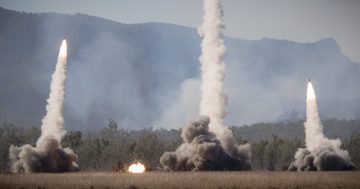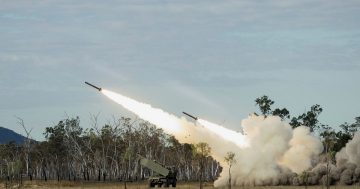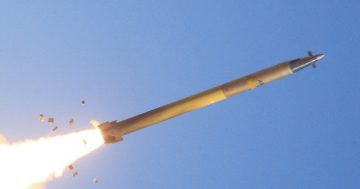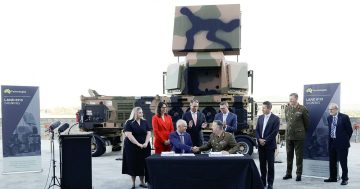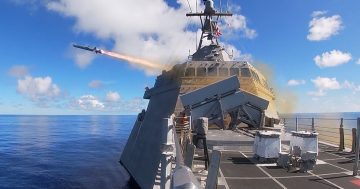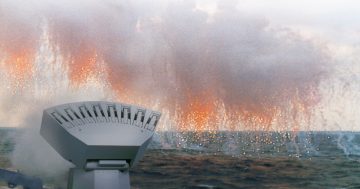
Concept art of a PrSM being fired from an M142 HIMARS launcher. Image: Lockheed Martin.
Just two days after releasing the Defence Strategic Review (DSR), the federal government announced another study into how to deliver on one of the DSR’s key recommendations.
The DSR was initiated last September to restructure the Australian Defence Force’s (ADF) capabilities and acquisition processes in order to better face emerging threats in the region. It was authored by former Labor Defence Minister Professor Stephen Smith and former Defence Chief Sir Angus Houston.
Two key recommendations of the DSR were to reduce the scale of a couple of large Army armoured vehicle programs – the Project LAND 400 Phase 3 Infantry Fighting Vehicle and the LAND 8116 Phase 2 Hanwha AS9 Huntsman Self-Propelled Howitzer – and instead focus on acquiring longer-range missile systems.
The DSR’s missile recommendation wasn’t a new one. There are already active projects to acquire the M142 HIMARS long-range precision missile system and a vehicle-based anti-ship missile capability. The armoured vehicle programs were scaled down ostensibly to free up funding to accelerate and increase these missile programs.
The 26 April announcement said the government will commit $1.6 billion to acquiring additional long-range strike systems and $2.5 billion into manufacturing some of these systems in Australia.
Apart from doubling the number of HIMARS and hastening their purchase, one of the acquisitions would be an acceleration of the developmental Precision Strike Missile (PrSM) program, for which Australia is a cooperative development partner with the US Army.
Manufactured by Lockheed Martin, the PrSM will provide precision strike capabilities against fixed and, in the future, moving targets at ranges of between 500 and 1000 km and will be compatible with the HIMARS launcher.
The government has been trying to establish local manufacturing programs for these missiles through the Sovereign Guided Weapons and Explosive Ordnance (GEWO) enterprise, which the Morrison Government announced in March 2021.
“What we inherited was a set of announcements here without any significant allocation of money,” Deputy PM and Defence Minister Richard Marles said in a doorstop interview on 26 April.
“We are more than doubling the contribution that the government is making towards establishing the manufacture of guided weapons in this country over the next four years.”
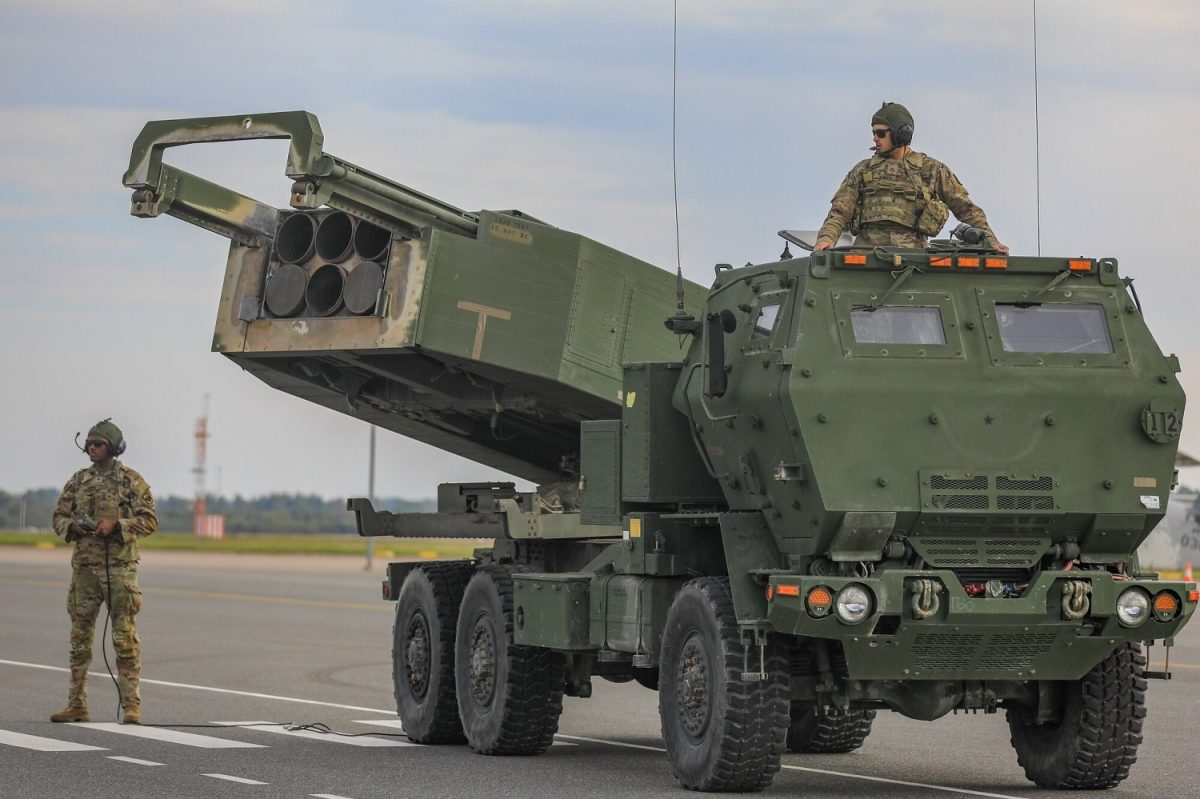
The HIMARS system is in high demand due to depleted ammunition stocks and growing demand from European nations. Photo: US Army.
Apart from the funding issues, there are likely also significant hurdles to be overcome in the form of the US’s extremely tight technology transfer and export control policies.
The 26 April release says the latest review is due to report in mid-2024 on the viability of “manufacturing guided weapons and their critical components to improve our self-reliance, with concrete, costed plans”.
It says the review will need to establish “critical enablers needed to underpin an expanded GWEO Enterprise, including increasing our testing and research capabilities and rapidly expanding our storage and distribution network to accommodate a growing GWEO inventory”.
Minister for Defence Industry Pat Conroy said, “What we’re talking about is a concrete plan being delivered to government early next year to enable us to start manufacturing guided weapons in around two years’ time from now”.
Interestingly, the government appears to have paused previous ambitions to acquire the 1600 km-range ship-launched BGM-109 Tomahawk cruise missile and instead focus on building up a more immediate land-based capability.
“That’s a question that we will consider and pursue,” Mr Marles told the ABC’s Insiders on 30 April.
“Tomahawk is something that we will consider over the journey. But right now, what we need is to get war stocks up in relation to, and platforms in relation to HIMARS and war stocks up in relation to them.”
Systems being looked at for local manufacture are believed to include the Kongsberg Naval Strike Missile (NSM), the Lockheed Martin JASSM-ER/LRASM, the Rafael Spike-ER anti-armour missile, and the Lockheed Martin M30 Guided Multiple Launch Rocket System (GMLRS) rockets fired by HIMARS.
The ambitious goal to manufacture these systems locally would mean, if approved, Australia would be less-reliant on global supply chains to replenish its own stocks in a time of crisis and could become a second-source supplier to other nations.
On face value, it appears a local manufacturing capability may be the only way Australia could accelerate its long-range strike ambitions, especially with HIMARS. The war in Ukraine has seen numerous HIMARS systems and thousands of missiles donated to Ukraine, and these stocks will need to be replenished. Meanwhile, European countries who have seen how effective it is against Russian defences are now queuing to buy the system.
To this end, last week, the US Army awarded a US$4.8bn (A$7.25bn) contract to Lockheed Martin to manufacture two more GLMRS production lots.












